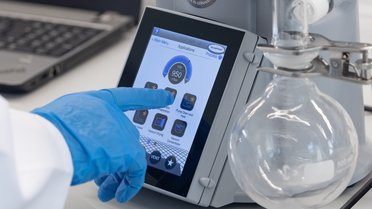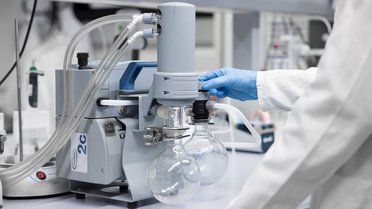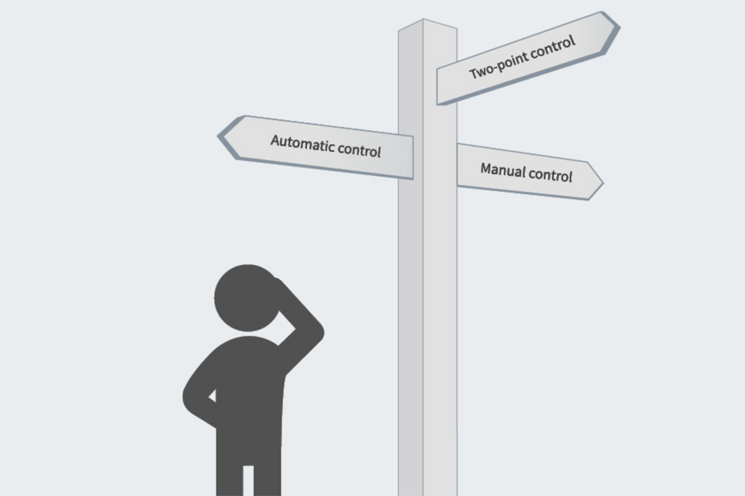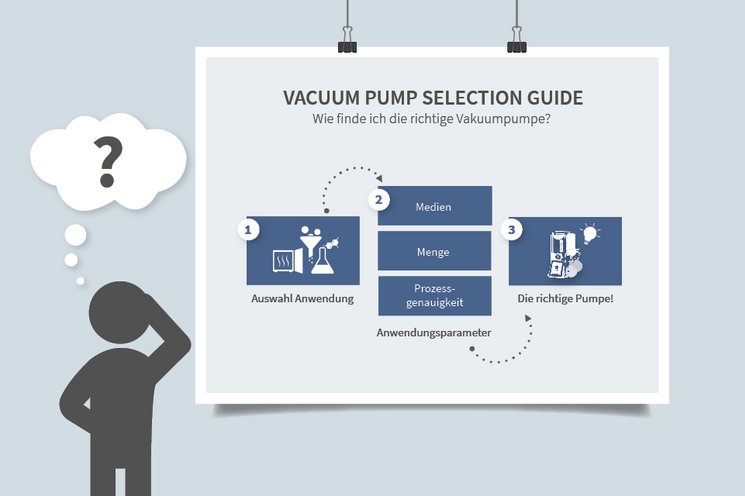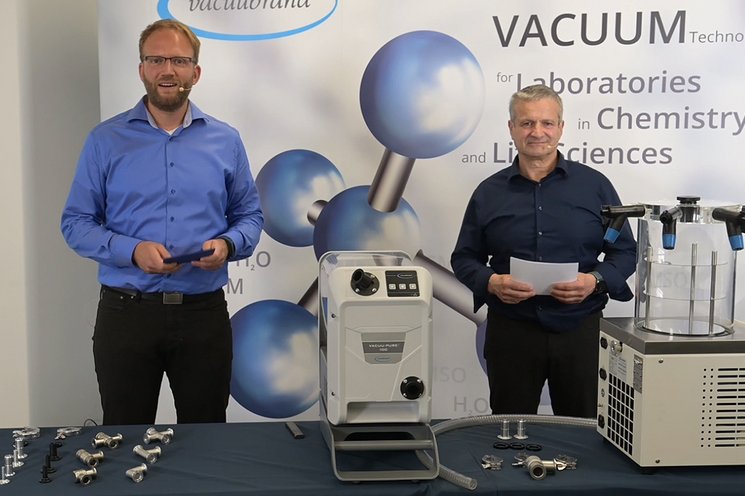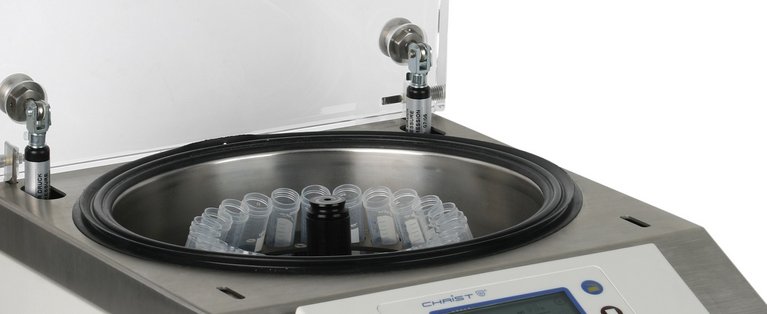
Vacuum concentrator
Precise vacuum control is required to achieve optimum evaporation rates and process times without bumping or foaming. The vacuum pump should also be designed for high vapor volumes and aggressive media.
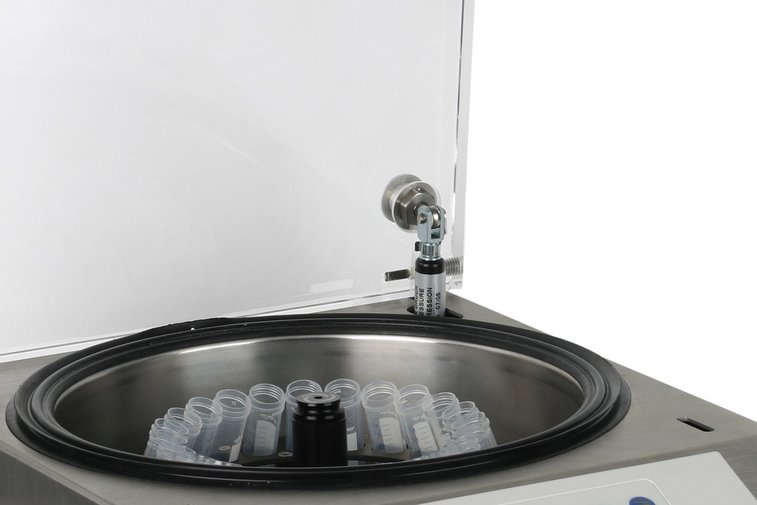
Vacuum for concentrators
Precise vacuum control and chemically resistant
Vacuum is the key parameter for concentration, as the temperature cannot be increased at will. Precise vacuum control enables optimum evaporation rates and the shortest possible process times without bumping or foaming.
Aggressive media are often used and high vapor volumes can occur. The vacuum pump should therefore have good chemical resistance, high condensate compatibility and sufficient pumping speed. We generally recommend the use of a separator (AK) on the inlet side and an emission condenser (EK) on the outlet side. This applies in particular if the concentrator is not connected to a cold trap.
VARIO chemistry diaphragm pumps with precise vacuum control and automatic evaporation mode offer the best conditions for vacuum concentrator processes.
Important questions on vacuum technology
Depending on the boiling point of the solvents, an ultimate vacuum in the range between 1 and 10 mbar is sufficient for the vacuum concentration. Chemistry diaphragm pumps are best suited for this purpose. They run oil-free and offer excellent chemical resistance and durability.
The ultimate vacuum required by the vacuum pump depends on the boiling points of the solvents used. Higher boiling points require a better ultimate vacuum of the vacuum pump. We recommend the following guidelines:
- up to 100 °C, two-stage chemistry diaphragm pumps with 7 mbar ultimate vacuum
- up to 150 °C, three-stage chemistry diaphragm pumps with 1.5 or 2 mbar ultimate vacuum
- above 150 °C, four-stage chemistry diaphragm pumps with 0.6 mbar ultimate vacuum
The pumping speed is determined by the quantities to be evaporated. The volume of the evaporation flask is a good orientation.
In our Vacuum Pump Selection Guide you will find the right product recommendations for your concentrator requirements:
With classic two-point control, a vacuum valve is switched to keep the vacuum within the target pressure range. VARIO diaphragm pumps control the vacuum precisely via the motor speed. This more precise control leads to optimum evaporation rates and up to 30 % shorter process times. It also makes the pump whisper-quiet, reduces energy consumption and vibration and extends the service life of the diaphragms.
With both two-point control and VARIO control, the VACUU·SELECT controller automatically detects the boiling point of a solvent or several boiling points of a solvent mixture. VARIO diaphragm pumps also offer the option of fully automatic evaporation with boiling pressure adjustment. This means that the pressure at the boiling point is not only maintained, but also automatically adjusted to the process flow. The process runs at optimum evaporation rates, in the shortest possible time and without bumping or foaming. All you have to do is press start and then you can devote yourself to other tasks.
An emission condenser (EK) at the outlet enables almost 100 % solvent recovery. A separator (AK) on the inlet side protects the pump by collecting condensate and retaining droplets and particles. If the concentrator is not connected to a cold trap, we strongly recommend the use of AK and EK.
A distinction must be made here between cold traps for vacuum pumps and cold traps for concentrators. The primary task of the vacuum pump is not to pump out the vapor volume, but to maintain the process pressure. With smaller sample quantities, the vacuum pump can also handle the vapor load. Due to the better chemical and condensate compatibility, chemistry diaphragm pumps with separators and emission condensers are recommended in such cases. A cold trap to protect the vacuum pump is not required for chemistry diaphragm pumps. The use of cold traps is more familiar from rotary vane pumps, as these are more prone to corrosion.
For larger sample quantities, a cold trap for concentrators is usually used, which is connected between the concentrator and the vacuum pump. A large proportion of the vapor volume is trapped there so that the vacuum pump is not overloaded. The remaining vapor can be handled by a suitable chemistry diaphragm pump as described above.
The concentrator and vacuum pump usually have hose nozzle connections that can be connected with a tubing. If the concentrator is connected to a cold trap, the vacuum pump is also connected to this.
In cases where the connection sizes of the pump and concentrator or cold trap differ, we offer suitable accessories as adapters.
In our Connection Guide you will find everything you need to know about connecting your vacuum pump to a vacuum concentrator.
Tips & tricks